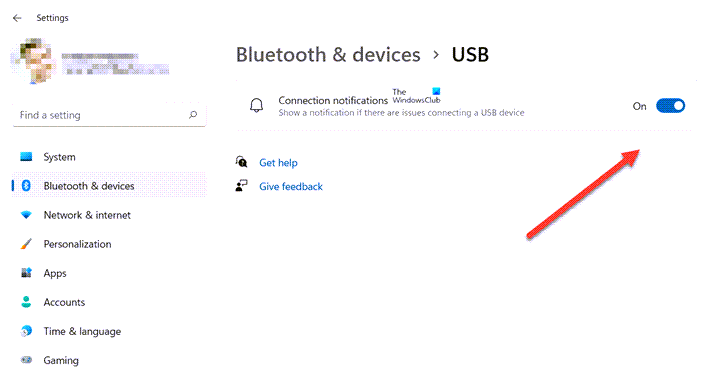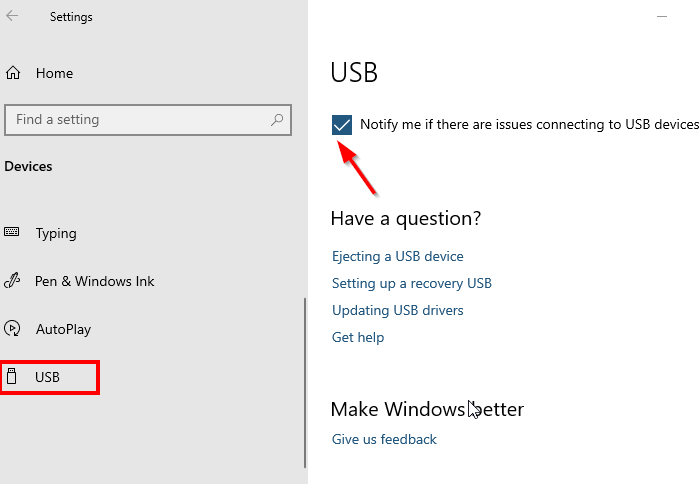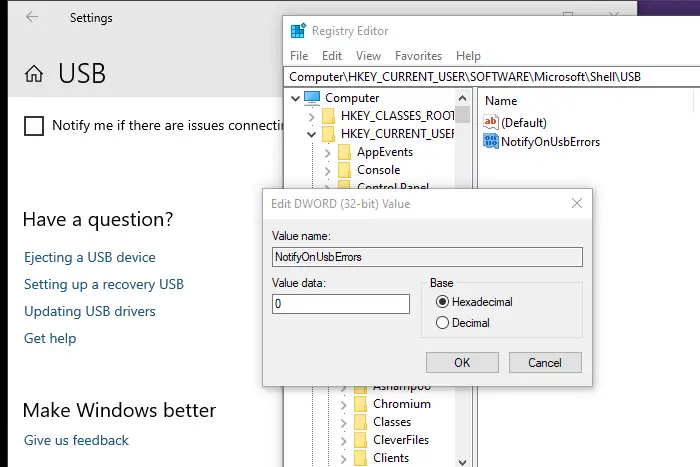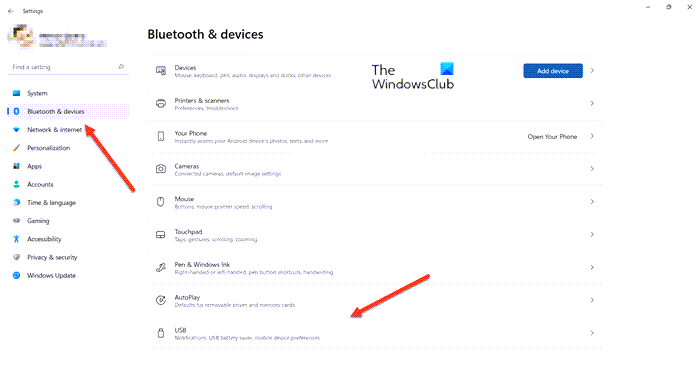Windows 11/10 offers a feature that can notify whenever a connected USB device has issues. It can be with the device you just plugged into the computer or devices like printers, external storage devices, and so on. It usually happens when the computer is not able to recognize the device. That said, many a time, these errors are false positives. You can easily get it as your device is working fine. While not recommended, if you get the error too many times, and like every time you plug in a USB drive, then it’s best to disable notifications of USB Issues in Windows 11/10. In this post, we will show how you can disable or enable this feature.
Disable Notifications of USB issues in Windows 11/10
There are two ways to turn off notifications about USB issues and problems:
- Change USB Settings in Windows
- Modify Registry Settings for NotifyOnUsbErrors key
When using the registry method, you can export the modified key and import it to any computer to instantly apply the change. It works on Windows 11/10 Home version as well.
1] Change USB Settings in Windows Settings
Windows 11
Windows 11 improves on its predecessor, refining the old catalog of settings, including USB settings, improving support for high-end games, and many others. Follow these instructions to disable notifications of USB Issues in Windows.
- Press Win+I in combination to open the Settings.
- From the panel on the left, scroll down to Bluetooth & devices.
- Switch to the right, and go to the USB heading. It allows you to configure Notifications, USB battery saver, mobile device preferences and other settings.
- When directed to a new screen, slide the toggle adjacent to Connection notifications option to the off position.

This will disable Windows 11 from showing notifications if any issues connect to a USB device.
Windows 10

Windows 10 offers this as a setting in the devices section. It is enabled by default
- Use WIN + I shortcut to open Windows 10 Settings
- Navigate to Devices > USB
- Uncheck the box against the option— Notify me if there are any issues connecting to the USB devices.
2] Change NotifyOnUsbErrors value in Windows Registry

NotifyOnUsbErrors is a key-value pair in Windows Registry, which can do the same as the settings. It is useful when you want to apply it to multiple computers remotely. You should be an admin user to edit registry settings. Also, make sure to create a restore point of your computer before making any registry changes.
Open Registry Editor by typing Regedit in the Run prompt, and pressing the Enter key
Click yes when you receive the UAC Prompt
In the Registry Editor, navigate to:
HKEY_CURRENT_USER\SOFTWARE\Microsoft\Shell\USB
Right-click on the space in the right pane, and create a new DWORD (32Bit)
Name it NotifyOnUsbErrors
Double-click to edit it. Set 1 to turn on notifications for USB issues and 0 (Zero) to turn them off.
You can change the value, and quickly verify the status by going to Settings Devices > USB.
I hope the guide was easy to follow, and you were able to disable Notifications of USB Issues in Windows. However, be aware it also suppresses the actual issues, so if you don’t see the USB device working, enable it and check the results.
Where is the USB computer connection notification?

Earlier, in Windows 10, the setting was present under the Devices section of Windows Settings. However, this location has been changed in Windows 11 and can be found under Bluetooth & devices section.
These posts may interest you:
Leave a Reply